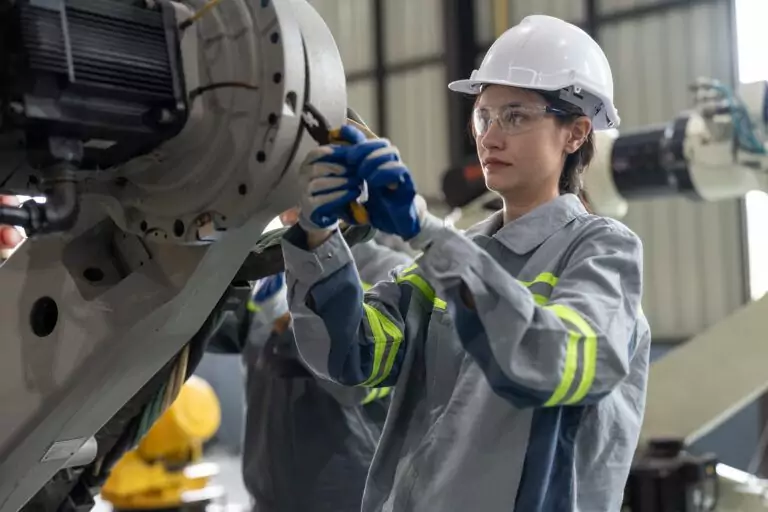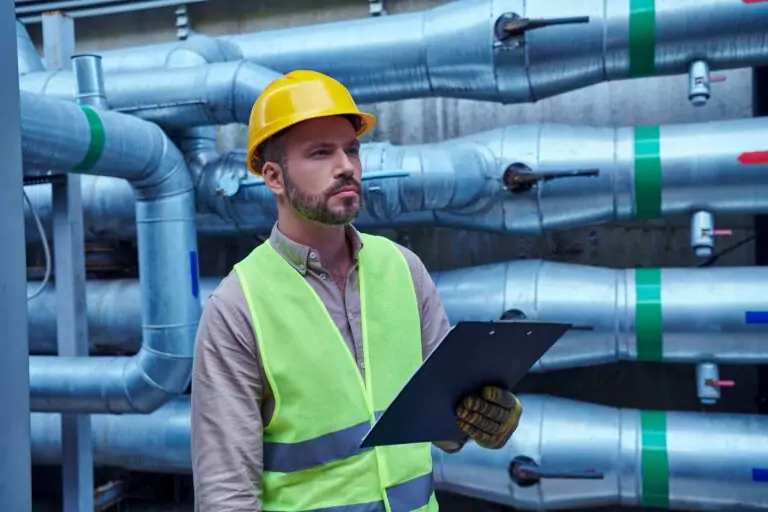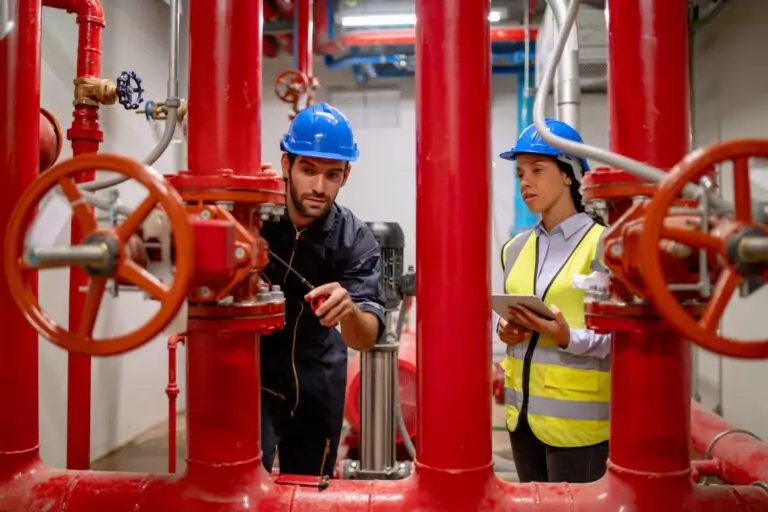Welcome to our in-depth exploration of the multifaceted world of civil and structural engineering. This field, vital for shaping the infrastructure of our future, comes with unique challenges and opportunities. From grappling with environmental concerns to ensuring the safety of our constructions, civil and structural engineers play a pivotal role in creating a sustainable and resilient world.
As we explore this innovative discipline, we’ll uncover the complexities of managing project budgets, the importance of adhering to safety standards, and the innovative practices transforming the industry. Moreover, we’ll discuss the critical issue of the skills gap and how the industry is responding to workforce challenges. Whether you’re an aspiring engineer or a seasoned professional, this article promises insights into the evolving landscape of civil and structural engineering, highlighting its challenges, technological advancements, and continuous push towards sustainability and efficiency.
Identifying and Addressing Environmental Concerns
Identifying and addressing environmental concerns is an essential process aimed at preserving our planet for future generations. This process requires collective action and commitment from governments, businesses, communities, and individuals.
Through research, policy changes, public engagement, and technological innovation, we can tackle these issues head-on and work towards a sustainable future for our planet.
Impact of Climate Change on Project Sustainability
Climate change significantly impacts project sustainability, necessitating adaptations across various sectors. Rising temperatures and unpredictable weather patterns challenge traditional project planning and execution methods. Sustainable practices must be integrated to ensure the long-term viability and resilience of projects.
Rising Sea Levels Affecting Coastal Infrastructure
The threat of rising sea levels to coastal infrastructure requires immediate and strategic responses. Infrastructure projects in vulnerable areas must incorporate adaptive measures, such as elevated construction and robust flood defences, to protect against the encroaching sea. This adaptation secures the infrastructure and the communities relying on it.
Increased Frequency of Extreme Weather Events
With the increased frequency of extreme weather events, project planning and development face unprecedented challenges. Implementing resilient design principles, such as selecting durable materials and adopting designs capable of withstanding extreme conditions, is essential. This approach ensures the continuity and safety of projects amid climatic unpredictability.
Regulations and Compliance with Environmental Standards
Navigating the complex landscape of environmental regulations and standards is key to ensuring project sustainability. These regulations aim to minimise the environmental impact of projects by promoting environmentally responsible practices. Effective compliance requires a proactive approach, integrating environmental considerations from the outset and throughout the project lifecycle.
Navigating Local vs. International Environmental Laws
The complexity of adhering to both local and international environmental laws in an international context cannot be overstated. Understanding and complying with this multifaceted legal framework is crucial for avoiding penalties and ensuring project success. It involves a strategic alignment of project goals with both local mandates and global sustainability objectives.
Implementing Sustainable Construction Practices
Adopting sustainable construction practices is pivotal for reducing the environmental footprint of projects. These practices involve the use of environmentally friendly materials, efficient waste management, and the renewable energy sources. By prioritising sustainability in construction, projects contribute positively to environmental conservation, community well-being, and economic sustainability, marking a step towards a more sustainable future.
Managing Project Budgets and Resources
Effective management of project budgets and resources is critical to successful civil and structural engineering projects. It involves meticulous planning and monitoring to prevent cost overruns and ensure the optimal use of materials, labour, and equipment. Key challenges include addressing unanticipated changes in material costs, mitigating delays that lead to increased labour costs, and optimising resource allocation to balance project demands with available manpower.
Efficient use of construction machinery and equipment also plays a vital role in staying within budget while achieving project objectives. Adopting strategic approaches to these challenges ensures the financial viability and timely completion of projects, aligning with client expectations and industry standards.
Cost Overruns
Cost overruns are a significant challenge in project management, often arising from unforeseen complexities or underestimations in initial budgeting. Effective mitigation involves rigorous financial oversight and the establishment of contingency reserves to accommodate unexpected expenses.
Unanticipated Changes in Material Costs
Fluctuations in material costs can unexpectedly impact project budgets. Adopting proactive procurement strategies and maintaining flexible budget allocations are critical for managing these variations, ensuring project quality remains uncompromised.
Delays Leading to Increased Labor Costs
Project delays frequently result in increased labour costs. Implementing efficient project management techniques and fostering clear, effective communication among all project stakeholders can minimise these delays and their associated financial impacts.
Resource Allocation and Optimization
Optimal resource allocation is essential for maximising efficiency and productivity. This requires strategic planning to ensure project resources, including manpower and materials, are utilised effectively, reducing waste and enhancing project outcomes.
Balancing Project Demands with Available Manpower
Effectively balancing project demands with available manpower demands strategic workforce planning. Anticipating project requirements and aligning them with workforce capabilities ensures that project objectives are achieved without overextending resources.
Efficient Use of Construction Machinery and Equipment
The efficient use of construction machinery and equipment plays a crucial role in maintaining budget integrity. This includes conducting regular maintenance, strategically scheduling equipment use, and ensuring machinery is optimally utilised for specific tasks, thereby avoiding unnecessary expenditures.
Ensuring Structural Safety and Reliability
Ensuring structural safety and reliability is paramount in civil and structural engineering. This imperative involves strict adherence to safety standards and codes, such as the International Building Code (IBC), to safeguard against potential hazards. Projects must incorporate earthquake-resistant design requirements, conduct thorough risk assessments, and develop comprehensive mitigation strategies.
Through these measures, projects achieve not only regulatory compliance but also the resilience needed to withstand environmental stresses, ensuring the long-term safety and reliability of structures.
Adherence to Safety Standards and Codes
Adherence to safety standards and codes is crucial, ensuring that engineering projects uphold essential safety benchmarks. This commitment minimises risks and promotes the integrity and safety of structures.
International Building Code (IBC) Compliance
Compliance with the International Building Code (IBC) is essential for maintaining global standards in construction. It ensures that structures can endure both normal and extreme stresses, providing a safeguard against potential disasters.
Earthquake-Resistant Design Requirements
Incorporating earthquake-resistant design requirements is critical in areas prone to seismic activity. These designs enhance a structure’s ability to withstand seismic forces, preventing collapse and ensuring the safety of occupants.
Risk Assessment and Mitigation Strategies
Risk assessment and mitigation strategies are fundamental to identifying and addressing potential hazards. This proactive approach ensures that vulnerabilities are managed and risks are minimised, safeguarding the project’s success and structural integrity.
Identifying Potential Failure Points in Structures
Identifying potential failure points in structures is a key step in preventing structural failures. This process allows for the reinforcement of weak points or design adjustments, significantly enhancing the structure’s resilience.
Developing Contingency Plans for Construction Phases
Developing contingency plans for various construction phases ensures preparedness for unexpected challenges. These plans provide a framework for navigating delays, material shortages, and other unforeseen events, keeping projects on track and within budget.
Keeping Up with Technological Advancements
Staying abreast of technological advancements is crucial in the practice of civil and structural engineering. Embracing these advancements not only elevates project outcomes but also ensures that engineering practices are competitive, sustainable, and in line with the latest industry standards.
Integration of New Software and Tools
The integration of new software and tools is transforming project management and design, enhancing efficiency and accuracy in civil and structural engineering projects. This shift facilitates improved collaboration and streamlined data management.
Transitioning to Building Information Modeling (BIM) Systems
Transitioning to Building Information Modeling (BIM) systems represents a significant step forward for project planning and execution. BIM fosters an integrated approach, enabling real-time collaboration and decision-making among project stakeholders.
Utilising Drones for Site Surveys and Inspections
Utilising drones for site surveys and inspections offers a revolutionary way to gather precise data and imagery. Drones enable detailed site analysis with high-resolution aerial views, improving monitoring and measurement accuracy with less disruption.
Adapting to Innovative Construction Materials and Methods
Adapting to innovative construction materials and methods pushes the envelope of engineering capabilities. This involves exploring new materials and construction techniques that offer superior durability, sustainability, and efficiency.
Implementing Self-Healing Concrete Technologies
Implementing self-healing concrete technologies represents a breakthrough in material science. This innovation significantly increases the longevity and durability of structures by enabling autonomous crack repair, thereby reducing maintenance needs and extending infrastructure lifespan.
Exploring the Use of Carbon Fiber Reinforcements
Exploring the use of carbon fibre reinforcements introduces a high-strength, lightweight alternative to traditional materials. Carbon fibre’s application in construction enhances structural integrity and resilience, presenting a sustainable solution to modern engineering challenges.
Navigating Complex Project Management Tasks
Navigating complex project management tasks is crucial for the successful completion of civil and structural engineering projects. Overcoming delays without compromising quality is essential, demanding a comprehensive approach to project management that balances efficiency with the high standards expected in the industry. This ensures projects are delivered on time, within budget, and to the satisfaction of all stakeholders.
Coordination Among Diverse Teams
Coordination among diverse teams is essential, fostering a unified approach by integrating various areas of expertise. This ensures all project facets align seamlessly for efficient execution.
Ensuring Effective Communication Between Architects, Engineers, and Contractors
Ensuring effective communication between architects, engineers, and contractors is crucial to precision and clarity in project execution. Clear communication channels are key to smooth project progression and coordination between disciplines.
Managing Subcontractor Schedules and Dependencies
Managing subcontractor schedules and dependencies demands meticulous planning and vigilant oversight. Proper management synchronises project components, avoiding delays and ensuring timely project completion.
Meeting Tight Deadlines
Meeting tight deadlines challenges project management to allocate resources efficiently and maintain rigorous scheduling. This commitment is vital for achieving project milestones on schedule.
Accelerated Project Timelines Due to Client Demands
Accelerated project timelines due to client demands require agile and adaptive project management strategies. Maintaining project quality while meeting these accelerated timelines is essential for client satisfaction and project success.
Overcoming Delays Without Compromising Quality
Overcoming delays without compromising quality involves strategic planning and effective problem-solving to balance project timelines with quality standards. This approach ensures that client expectations and project integrity goals are met.
Dealing with the Unpredictability of Construction Sites
Dealing with the unpredictability of construction sites is a fundamental challenge in civil and structural engineering projects. Successfully navigating these uncertainties demands a proactive approach, with an emphasis on adaptability, comprehensive risk assessment, and contingency planning to minimise delays and ensure project success.
Unforeseen Site Conditions
Unforeseen site conditions present significant challenges, requiring agile responses and strategic adjustments to ensure project continuity and safety.
Discovering Archaeological Finds or Contaminated Soil
Encountering archaeological finds or contaminated soil necessitates prompt action, including comprehensive site assessments and project plan modifications, to manage these discoveries responsibly.
Adjusting Plans for Underground Utilities Not Marked on Maps
Adjusting plans for underground utilities not marked on maps is crucial for avoiding disruptions and ensuring the smooth progression of projects without damaging existing infrastructure.
Weather-Related Delays
Weather-related delays are a common challenge, making anticipation and strategic planning essential to minimise their impact on project schedules.
Planning for Seasonal Weather Impacts on Construction Phases
Planning for seasonal weather impacts on construction phases requires careful scheduling and resource management to mitigate the effects of adverse weather on the construction process.
Implementing Measures to Protect Work in Progress from Severe Weather
Implementing measures to protect work in progress from severe weather is critical for safeguarding investments and ensuring the safety and integrity of construction sites under adverse conditions.
Addressing the Skills Gap and Workforce Challenges
Addressing the skills gap and workforce challenges is crucial for the sustainability and growth of the civil and structural engineering sectors. The evolution of these fields underscores the increasing demand for professionals skilled in emerging technologies and sustainable practices. Investing in professional development programs not only enhances individual capabilities but also significantly contributes to the engineering workforce’s overall resilience and adaptability to future challenges.
Recruitment of Skilled Professionals
Recruitment of skilled professionals is critical, serving as the foundation for innovation and excellence in civil and structural engineering projects, and ensuring the sector remains competitive and forward-thinking.
Competing with Other Industries for Engineering Talent
Competing with other industries for engineering talent underscores the necessity for the engineering sector to highlight the unique benefits it offers, such as meaningful work in designing and building infrastructure that shapes societies, to attract top candidates.
Attracting Younger Generations to the Engineering Field
Attracting younger generations to the engineering field requires demonstrating the profession’s impact on the world, highlighting opportunities for creativity and innovation, and a significant role in addressing global challenges.
Training and Development of Existing Staff
Training and development of existing staff are indispensable for ensuring that the workforce remains adept with cutting-edge technologies and methodologies, keeping the team adaptive and proficient in the latest industry standards.
Keeping Pace with Continuing Education Requirements
Keeping pace with continuing education requirements is vital for professionals to maintain their qualifications and stay abreast of the rapidly evolving civil and structural engineering landscape, thereby enhancing project quality and adherence to safety protocols.
Investing in Professional Development Programs
Investing in professional development programs reflects a commitment to fostering employee growth and job satisfaction, which, in turn, elevate individual and organisational performance, driving innovation and success in the engineering domain.
Building a Sustainable Future
Civil and structural engineers are at the heart of creating resilient, sustainable infrastructure. From managing environmental challenges to adopting new technologies, the industry’s evolving landscape requires adaptability and innovation to meet global demands.
At Vista Projects, we combine over 40 years of experience with cutting-edge solutions to deliver sustainable, high-quality engineering. Let us help you build the future. Contact us today to explore how we can support your next project.









